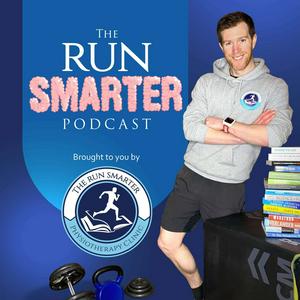Exclusive AMA: Stress Fractures, Under-Striding, Strength Sets, & Compression Socks
Learn more about Brodie's Research Database & AI Assistant 📄🔍For MORE Run Smarter Resources 🏃♂️📚- Including Free Injury Prevention Courses 🩹🎓- The Run Smarter Book 📖- Access to Research Papers 📄🔍- & Ways to Work with Brodie 🤝👟👉 CLICK HERE! 🎉✨In this special episode, Brodie releases a previously patron-only AMA, answering a wide range of listener questions across injury rehab, running technique, strength training, and recovery tools. Even if you don’t struggle with these issues now, the principles and reasoning in Brodie’s answers provide invaluable insight into smarter training decisions for every runner.🦴 1. Training With Stress Fractures Below the AnkleBrodie breaks down why not all stress fractures are equal and why their location, grade, and healing stage matter. He explains:The difference between high-risk vs low-risk stress fracturesWhy navicular fractures heal slowly due to poor blood supplyThe importance of pain-free loading (during, after, and next day)How to rebuild fitness without stressing the foot: swimming, pool running, upper body strength, knee extensions, seated hamstring curlsA staged return to loading:Offloaded cardio + upper body strengthSeated cycling with low resistanceRowing + progressive cycling loadsStanding lower-limb strength work (squats, lunges, calf raises)Elliptical and increasing time-on-feet toleranceJump progressions → walk/jog programBrodie even maps out a sample weekly schedule for mixed cross-training and strength while rehabbing.🏃♀️ 2. “Understriding” Explained (Gait Analysis Breakdown)A listener asks if it's possible to understride because her gait report showed “reduced overstride bilaterally.”Brodie explains:What overstriding actually isWhy you must contact slightly in front of your centre of massWhy a high cadence (e.g., 188 spm) naturally prevents overstridingWhy “closer to centre of mass than average” is not a problem if you feel stable and uprightWhy there's usually no need to change your technique if you're not braking excessively or injuring yourselfGreat mini-lesson on biomechanics, cadence, and efficient landing mechanics.🏋️♀️ 3. Is One Set Enough in Strength Training?A unique question: Can I just do one set of an exercise and move on?Brodie dives into:What’s required to trigger true adaptationWhy one set rarely provides enough consistent stimulusWhy variety is good—but too much can “spread your progress thin”How to work around boredom or repetition fatigue using:SupersetsCircuitsAlternating upper/lower body between setsHis recommended “big three” for runners:SquatsDeadlifts / Lunges / Step-upsCalf raisesHow minimal effective dosing still works if done consistently and progressivelyPractical, realistic strength advice every recreational runner can apply.🧦 4. Do Compression Socks Actually Help Twingy Calves?Brodie reviews the latest meta-analysis on compression garments and their effects on recovery:Stronger evidence for resistance training recoveryNo significant recovery effects following runningSmall benefits for next-day cycling performanceHis advice:If compression feels nice, it’s fine to use as a short-term comfort toolBUT: don’t rely on it—investigate the cause of recurring calf twingesTraining load balanceSpeed workHillsShoe heel-dropHydration and sodium statusFollow the Recovery Pyramid (Shona Halson):Sleep, nutrition, hydration, stressWater immersionActive recoveryMassageCold/heat, cryo, infraredTop of pyramid: fads like foam rolling, massage guns, compression🎧 Final ThoughtsThis AMA covers a broad range of topics, but the theme is consistent: Use symptoms to guide load, progress logically, and focus on long-term habits rather than quick fixes.


